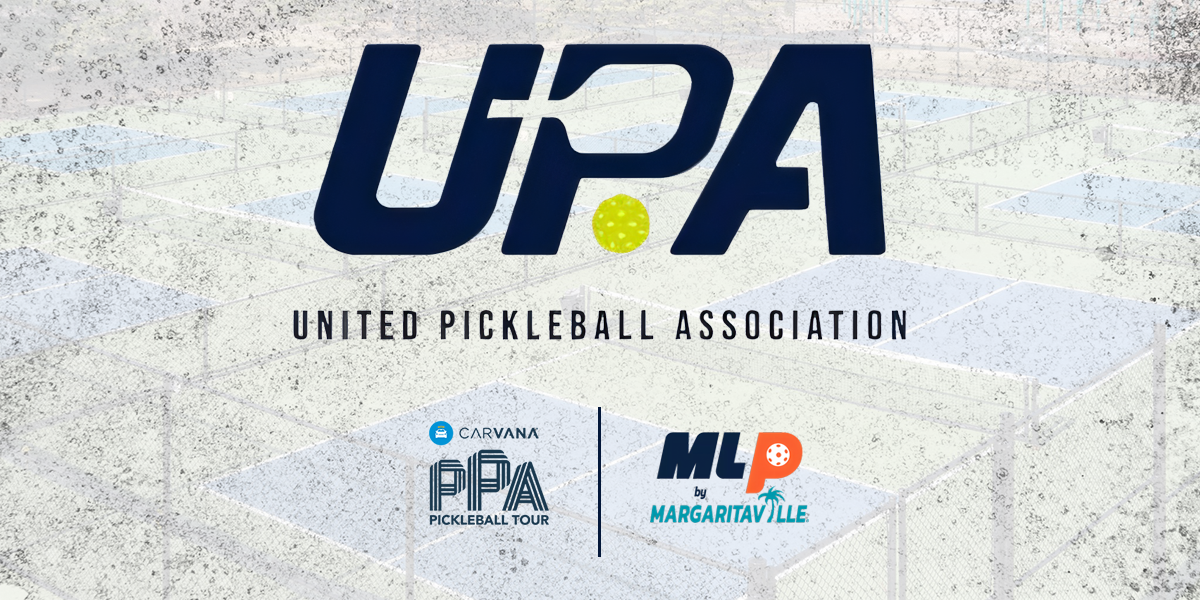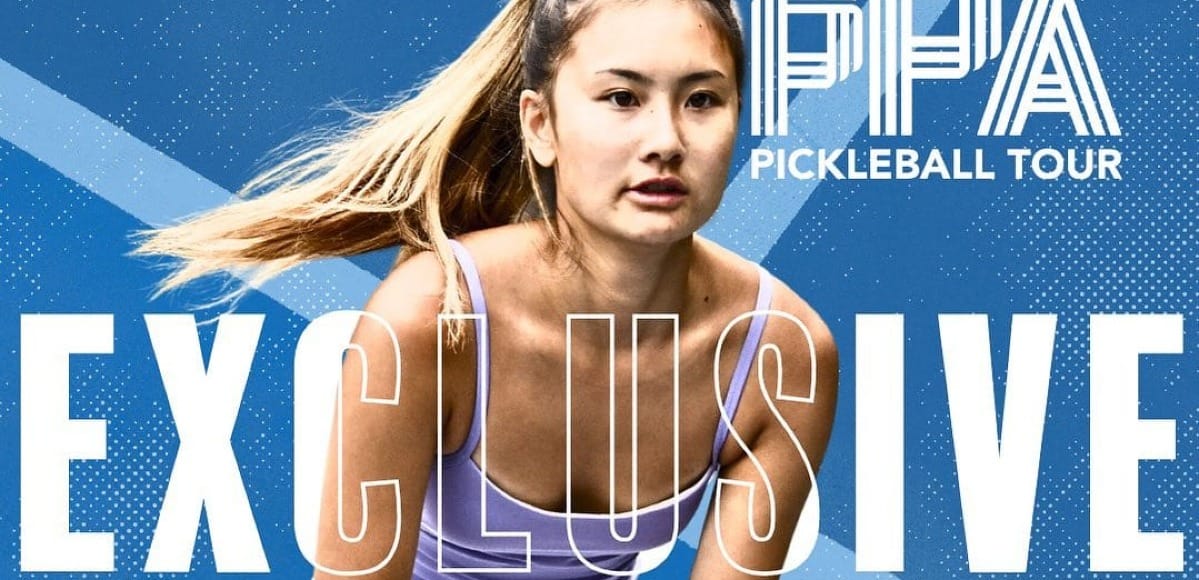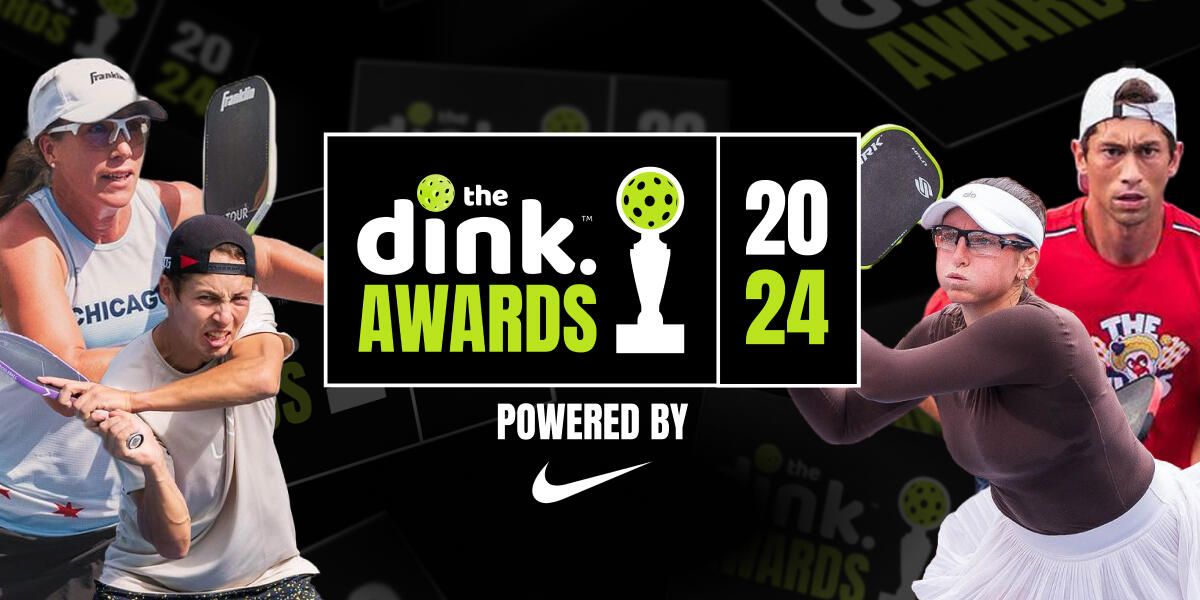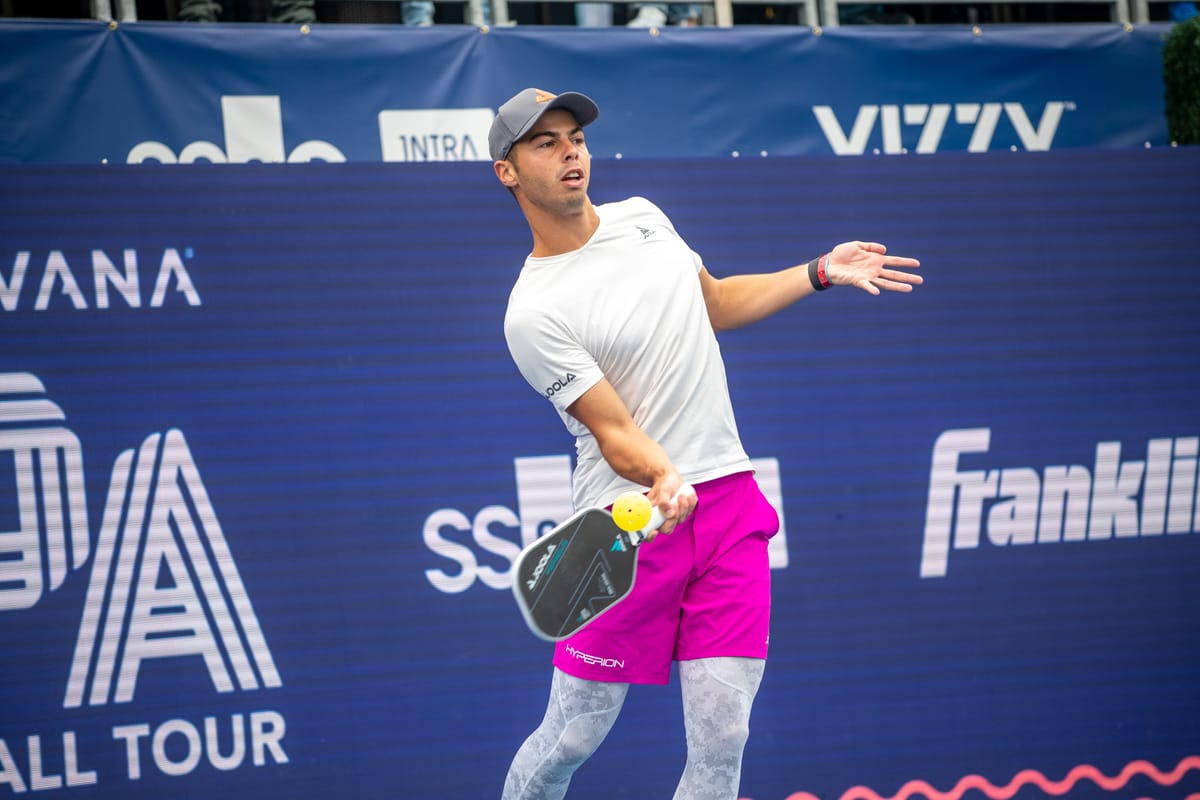
Pickleball's Financial 'Emergency' Sparks Online Clash with UPA Executives Who Immediately Refute Claims
Claims that the United Pickleball Association (UPA) are scrambling for an emergency bridge loan, made by a professional player and podcaster yesterday, sparked a flurry of social media posts from the UPA's new Chief Strategy Officer Samin Odhwani, PPA Tour Founder & Commissioner Connor Pardoe, a number of pro players and various pickleball commentators.
Odhwani: You clearly have the email about the bridge loan, but did you just invent the word “emergency”? It’s not in there.
The Claim: The United Pickleball Association (UPA), the entity formed from the high-profile merger of the Major League Pickleball (MLP) and The Professional Pickleball Association Tour (PPA), is seeking a $10 million "emergency" bridge loan.

These claims of financial distress were levied by Jilly B, or Jill Braverman, a vocal figure in the sport known for her commentary as a pro player, podcaster and investor. Through a series of posts on X (formerly Twitter) and her podcast, This Pickleball Life, Braverman expressed serious concerns about the UPA's financial health. The source? An internal email to UPA investors was leaked to Braverman, reportedly suggesting that the organization is burning through cash at an alarming rate and that this bridge loan is a desperate attempt to avoid insolvency.
Ten months after the blockbuster “$75 Million” merger between Major League Pickleball (Lebron James, Tom Brady, Anheuser-Busch) and Tom Dundon’s (Carvana, Top Golf) backed PPA Tour, the new entity (the UPA) needs an emergency bridge loan of $10mm by January 15 to meet its.....
— Jillian Braverman (@jillybpb) January 2, 2025
The thread of X posts has racked up over a half million impressions in less than 24 hours. The pickleball world is filled with drama, but it's rare for it to reach beyond the immediate community.
The podcast episode, in which she and her cohost provide a deep dive into the situation and its implications, is nearing 5,000 views.
Her claims were quickly met with pushback. Odhwani fired back at Braverman via X.
Jill, let’s stick to the facts—happy to help you with that. I just left a role with @KDTrey5 , Thirty Five Ventures, and @boardroom to become Chief Strategy Officer at UPA. I moved my wife and newborn to Dallas yesterday because, after meticulously reviewing the financials and https://t.co/jMaOqQsa3L
— Samin Odhwani (@SaminOdhwani) January 3, 2025
After meticulously reviewing the financials and financing strategy, I know this league will be a $1B+ business.
Odhwani Continues: "The league did $50M in revenue last year—right on plan, which is a miracle in a merger year and a testament to Connor Pardoe, our operating team, and ability to execute.
The costs that we are now funding, which were outside of budget, are: 1) buying back two teams and 2) buying players out of contracts we inherited from the bidding wars. These investments were made after board deliberation and with intentionality.
You clearly have the email about the bridge loan, but did you just invent the word “emergency”? It’s not in there. What you didn’t mention is that the $10M is already funded by existing investors, showing how committed our team owners are to our growth.
Since you like to make false claims, should we remind everyone when you said MLP players couldn’t play PPA events? What happened there? Or when you claimed to have over 100 players committed to your collective—should we share the truth on that?
Or the many times you said the merger would never happen? You have absolutely no credibility. It’s unfortunate you’re not good enough to play with the best on the top tour and you have to resort to clickbait to fuel your career as a micro influencer. Seems like this time of year inspires you to make false claims
—looking forward to seeing what’s next."
Braverman was quick to offer a retort:
...but a few weeks later revealed the number to be closer $20mm? Also revealed to me: a $6mm+ miss on SG&A? Hey, I’m just a naive pro player and small shareholder in UPA—it sounds like you definitely have it all under control.
— Jillian Braverman (@jillybpb) January 3, 2025
Samin, it seems like I struck a nerve! Yesterday, one of the UPA’s longest and biggest sponsors went a podcast to say that your CEO’s letters read like “Enron and are misleading at best.” It was also reported to me your CEO claimed $36mm+ sold in sponsorships for 2025…
— Jillian Braverman (@jillybpb) January 3, 2025
Pardoe Weighs in:
My response to Jill Braverman’s take on pro pickleball.
— Connor Pardoe (@connorpardoe_pb) January 3, 2025
Wow, @jillybpb What a sensational take. I wasn’t planning to respond, but when misinformation starts spreading, it’s important to set the record straight.
The health and trajectory of professional pickleball have never…
My response to Jill Braverman’s take on pro pickleball.
Wow, @jillybpb What a sensational take. I wasn’t planning to respond, but when misinformation starts spreading, it’s important to set the record straight.
The health and trajectory of professional pickleball have never been better. The combined PPA Tour and MLP generated over $50M in revenue last year and are on track to exceed $65M in 2025. That’s without team sales, by the way. Sponsorships are nearing $35M, ticket sales are at $10M, and event registrations are hitting $9M. These numbers don’t lie and they reflect a sport that’s growing, thriving, and building toward a $1B enterprise.
Sure, merging MLP and the PPA Tour wasn’t without its challenges. Growth never is. But we’re incredibly proud of what this organization has accomplished. From a talented staff to the professional players, and a supportive ownership group, everyone is working tirelessly to elevate the sport we all love.
Your narrative, however, doesn’t reflect reality. It’s full of half-truths and sensationalism aimed at tearing others down rather than lifting the game up. If your goal is truly to help pickleball, spreading misinformation isn’t the way to do it.
Professional pickleball is still in its early stages, and yes, tough decisions have to be made. But let me be clear bridge loans, investments, and calculated risks are part of any ambitious growth strategy. To suggest otherwise shows a lack of understanding about how successful organizations operate.
The reality is, Jill, the sport has outgrown your ability to stay relevant. Maybe that’s why you’re so bitter. It’s easier to play the victim and stir up drama than to acknowledge that you’re simply not a part of the future of pro pickleball.
Good luck with whatever grudge driven project you’re working on for 2025. We’ll be busy growing the sport, leading the community, and building the next biggest sports enterprise. Pickleball’s trajectory is set with or without you.
Pickle on,
Connor
Braverman responds to Pardoe
Hey Connor, I'll reply to you what I just shared w/ Samin. Yesterday, one of the UPA’s longest and biggest sponsors went a podcast to say that your (Connor Pardoe's) letters read like “Enron and are misleading at best.” It was also reported to me that you claim...
— Jillian Braverman (@jillybpb) January 3, 2025
Hey Connor, I'll reply to you what I just shared w/ Samin. Yesterday, one of the UPA’s longest and biggest sponsors went a podcast to say that your (Connor Pardoe's) letters read like “Enron and are misleading at best.”
It was also reported to me that you claim $36mm+ sold in sponsorships for 2025 (as you did in this tweet)…but a few weeks later revealed the number to be closer $20mm? Also revealed to me: a $6mm+ miss on SG&A?
Hey, I’m just a naive pro player and small shareholder in UPA—it sounds like you definitely have it all 100% under control.
Fellow Pro and Veteran Rob Nunnery Enters the Chat:
This, from the founder of the @PPAtour, is wildly childish.@jillybpb, not that it's relevant to her story whatsoever, would be consistently going deep into main draws on any tour.
— Rob Nunnery (@_robnunnery) January 3, 2025
With all of that revenue, might be time to hire a PR firm to help with some media/social training. https://t.co/6koogwTIBJ pic.twitter.com/nLgmsH8ywF
And again here...
— Rob Nunnery (@_robnunnery) January 3, 2025
The dissing of a pro's playing ability, which isn't even true, is so childish. @SaminOdhwani Just share the facts and counterarguments without personal shaming/bullying. It would make your argument stronger. Bring your professionalism to UPA to create some… https://t.co/onVZMu7yqO
And again here...
— Rob Nunnery (@_robnunnery) January 3, 2025
The dissing of a pro's playing ability, which isn't even true, is so childish. @SaminOdhwani Just share the facts and counterarguments without personal shaming/bullying. It would make your argument stronger. Bring your professionalism to UPA to create some… https://t.co/onVZMu7yqO
It's worth noting that the PPA Tour then amplified Pardoe's post.
PPA Tour's CEO, @connorpardoe_pb, responds to Jill Braverman's latest allegations https://t.co/mg5n0f1ILh
— Carvana PPA Tour (@PPAtour) January 3, 2025
If it's not true or misleading, UPA is right to squash the rumors hard and fast, publicly
— Thomas Shields (@readmynewslettr) January 3, 2025
Most pros will stay quiet as usual, understandably so, but it's nice to see Nunnery stand up for Braverman
That said, this feels like it's devolving into something that looks bad for…
The social media back and forth is ongoing and we'll keep you updated here. In the meantime, let's dive into the details.
The Implications of a Bridge Loan
Note: the remainder of this article was drafted by The Dink Media Team prior to the dispute ensued via X.
For those unfamiliar with the intricacies of business finance, let's break down what this all means. A bridge loan is a short-term financing option typically used to cover immediate expenses while a company secures more permanent funding. It's a common tool for startups and rapidly growing companies navigating periods of rapid expansion or facing unforeseen financial challenges.
So, does this mean the UPA is on the brink of collapse? Not necessarily. Bridge loans can be a normal part of a company's growth trajectory, providing a temporary lifeline to help them reach the next stage of development. However, the fact that the UPA is seeking this loan just months after the highly publicized merger, which was touted as a major step towards consolidating and strengthening professional pickleball, is undoubtedly cause for concern.
Further, the rumors suggest the UPA has been actively raising 10s of millions in additional funding. Why the need for a bridge loan now? This might suggest that the financial picture might not be as rosy as previously portrayed.
The Spending Continues
Adding another layer of complexity to this situation is the recent announcement of Gabe Tardio's lucrative 800k contract with the PPA. On one hand, this seems like a positive development. Tardio is a top-ranked player, and his signing could be interpreted as a sign of the UPA's commitment to attracting and retaining elite talent.
Gabe Tardio already winning in 2025… pic.twitter.com/FKdoKJqM9z
— The Dink Pickleball (@Pickleball) January 2, 2025
However, juxtaposed with the news of the bridge loan, it raises questions about the UPA's financial priorities and decision-making process. Is this strategic investment in additional talent an indicator that the the financial concerns are overblown, or is it an ill-timed expenditure that further jeopardizes the organization's stability?
The Call for Transparency
While UPA executives certainly have an obligation to be transparent with their investors, the question of whether they owe that same level of transparency to the broader pickleball community is a subject of ongoing debate.
Some argue that as the governing body of professional pickleball, the UPA has a responsibility to be open and honest with all stakeholders, including players, fans, and the general public. This transparency, they contend, is crucial for building trust and ensuring the long-term health of the sport. Others maintain that the UPA's financial dealings are private matters and that disclosing such information could harm their competitive position and hinder their ability to secure future investments.
Regardless of where one stands on this issue, the current situation underscores the challenges inherent in building a successful professional sports league. While pickleball's popularity is exploding at the grassroots level, translating that success to the professional arena requires more than just exciting matches and talented players. It demands astute financial management, strategic decision-making, and a clear vision for the future.
To fully grasp the implications of this situation, it's essential to delve deeper into the complexities of bridge loans, player contracts, and the evolving landscape of professional pickleball.
Bridge Loans: A Double-Edged Sword
Bridge loans can be a valuable tool for companies seeking to navigate periods of financial uncertainty or to capitalize on strategic opportunities. They provide a short-term injection of capital that can help companies meet immediate obligations, fund expansion initiatives, or bridge the gap between funding rounds.
However, bridge loans are not without risks. They typically come with higher interest rates and shorter repayment terms than traditional loans, which can put a strain on a company's cash flow. Moreover, if a company fails to secure the long-term financing it needs to repay the bridge loan, it can find itself in a precarious financial position.
In the case of the UPA, the need for a bridge loan raises several critical questions:
- What are the specific circumstances that led to this need for short-term financing? Is it a temporary cash flow issue, a common challenge for startups, or is it indicative of deeper financial problems?
- What is the UPA's plan for securing the long-term funding needed to repay the bridge loan? Do they have a viable strategy in place, or are they relying on optimistic projections and hoping for the best?
- What are the terms of the bridge loan, and how will they impact the UPA's financial flexibility moving forward? Will the high interest rates and short repayment terms hinder their ability to invest in the growth of the sport?
Player Contracts: Balancing Investment and Sustainability
The signing of Gabe Tardio to an 800k contract is a significant investment in the UPA's future. Tardio is a rising star in the pickleball world, and his presence on the PPA tour is sure to attract fans and sponsors. However, the timing of this signing, in the context of the bridge loan, raises concerns about the UPA's financial prudence.
Investing in top talent is essential for any professional sports league, but it's crucial to strike a balance between attracting star players and maintaining financial sustainability. Overspending on player salaries can lead to financial instability, while underspending can result in a lack of competitiveness and a decline in fan interest.

The UPA needs to demonstrate that they have a well-defined strategy for managing player salaries and ensuring that their investments in talent are aligned with their long-term financial goals.
Transparency and Accountability: Building Trust in a Growing Sport
Braverman asserts that the UPA's lack of transparency regarding their financial situation has created anxiety within the pickleball community. While it's reasonable for them to protect certain sensitive information, they also have a responsibility to be open and honest with their stakeholders, but according to some investors, this need for a bridge loan came as a complete surprise.
Building a successful professional sports league requires trust and collaboration. The UPA needs to foster a culture of transparency and accountability, communicating openly with players, fans, and investors about their financial health, their strategic plans, and the challenges they face.

The Future of Pro Pickleball: Navigating the Path to Success
The current situation with the UPA highlights the complexities and challenges inherent in building a thriving professional sports league. While pickleball's popularity is undeniable, translating that grassroots enthusiasm into a sustainable professional model requires careful planning, strategic investment, and effective leadership.
This latest situation is just one of a handful of ongoing causes of concern surrounding the pickleball juggernaut. A series of podcasts released earlier this week indicated that the paddle testing debacle is far from over, and that equipment manufacturers have banned together to pushback on newly implemented policies.

The UPA has made bold moves in its quest to consolidate and elevate professional pickleball, but they now face a critical juncture. The decisions they make in the coming months will have a profound impact on the future of the sport.
This is a developing story with far-reaching implications. The pickleball world is watching closely, eager to see how the UPA navigates these challenges and charts a course for the future of this exciting and rapidly growing sport.

Love Pickleball? Join 100k+ readers for free weekly tips, news & gear deals.
Subscribe to The DinkGet 15% off pickleball gear at Midwest Raquet Sports












